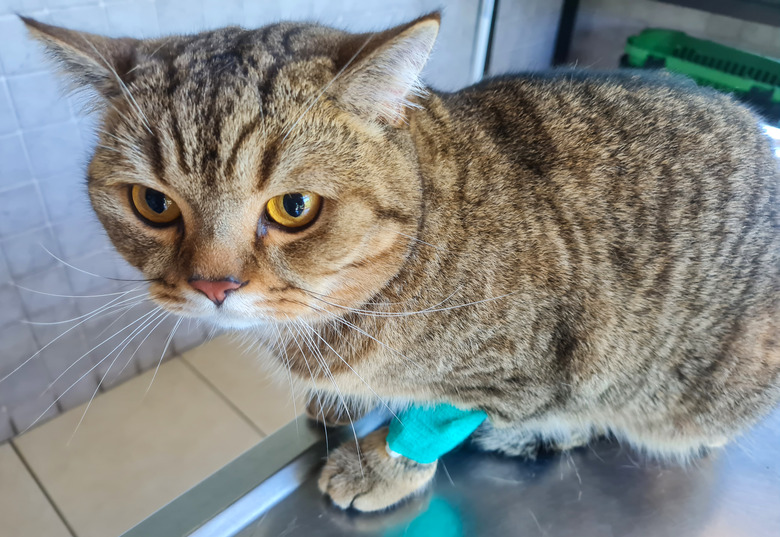Home Treatments For A Cat With A Broken Foot
When an accident results in a broken leg or paw, it's extremely important to take action right away. Your cat will be in pain, and you'll want to help the bones heal properly. This isn't something you should do on your own, so working with your veterinarian will be crucial.
How to tell if a cat has a broken foot
How to tell if a cat has a broken foot
Several symptoms may indicate a broken foot on a cat. A severe injury in which a bone breaks through the skin will be obvious, but other symptoms might be more subtle. Keep in mind that cats try their best to hide their pain.
You might notice:
- Limping or difficulty walking, running, or jumping
- Swelling of the tissues around or near the affected bone
- Visible changes to the angle of the foot
- Skin discoloration or injuries in the area of the broken bone
- Trouble moving the foot
- Changes in behavior (e.g., changes in appetite or activity level, excessive vocalization, hiding)
Take a cat with a broken paw to the veterinarian
Take a cat with a broken paw to the veterinarian
Even if you only suspect that your cat has broken a foot, don't try to treat the problem on your own. Head to the veterinarian immediately to have your pet diagnosed and treated.
A broken bone needs to be assessed by a veterinarian to determine the extent of the damage. This typically involves a physical exam and X-rays. Treatment can range from a splint to surgery and will depend on the type of fracture or break.
Whether it's a small fracture or a severe break, your veterinarian will be able to provide the proper care and will guide you on how to keep your cat as comfortable as possible until the bone is healed.
Home care tips for a cat with a broken paw
Home care tips for a cat with a broken paw
Your veterinarian can tell you how to treat a cat's broken foot at home to prevent complications. There are some general guidelines to follow.
Follow basic bandage and splint care instructions
Taking care of your cat's bandage and splint is necessary to avoid issues like infections and improper healing of the bone.
Prevent your cat from chewing on or damaging the bandage. Ensure the splint and bandage always remain dry and securely in place. Also, the bandage and splint should be fitted properly and shouldn't cause discomfort.
If you need to change the bandage and/or splint, your veterinarian might teach you how to do it at home, or they might do it for you in their office.
Look for signs of infections and splint problems
Infections might develop, or an existing infection might not clear properly, so keep an eye on your pet's foot as it heals. Look for problems like swelling, discharge, odors, redness, irritation, or pain.
If the splint shifts out of place or is damaged in some way, let your veterinarian know. Don't attempt to adjust it on your own.
Modify the home for a cat with a broken foot
When your cat has a broken foot, you may need to modify their environment to make it easier for them to get around. For example, if your cat typically jumps on your bed to nap, pet stairs might make it easier for them, or you might have your cat use a pet bed instead.
Also, your cat might have trouble getting into and out of the litter box. For instance, if your cat uses a litter box that has high sides, switch to one that has low sides. When it comes to the litter you use, you may need to switch to one that's nonclumping.
Don't hesitate to call your veterinarian for advice during recovery
As your cat heals, you'll likely take them to the veterinarian regularly for checkups. However, if there are problems with the splint or bandage, your cat doesn't want to stop chewing at them, or there are signs of infection, you should contact your veterinarian right away.
In summary
In summary
A broken cat paw is a serious problem that should be handled by a veterinarian. Don't delay getting your pet the care they need. Rest assured that there are options, such as CareCredit and low-cost pet insurance, that can help you afford trips to the veterinarian for this type of treatment.


